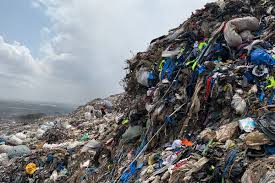Can technology solve the global textile waste crisis?

The global textile industry, a cornerstone of the economy, has a dirty secret: waste. Mountains of discarded clothing and textile remnants clog landfills, leach harmful chemicals, and contribute significantly to environmental pollution. But within this crisis lies an opportunity. Textile recycling, once a niche concept, is rapidly evolving into a dynamic sector driven by technological advancements, consumer awareness, and the urgent need for sustainable practices.
Global waste crisis in numbers
The scale of the textile waste problem is staggering. According to the World Economic Forum, a garbage truck's worth of textiles is landfilled or incinerated every second, amounting to a colossal 92 million tonnes annually.
Table: Global textile waste regionwise
|
Region |
Estimated textile waste generation (mn tons) |
|
North America |
13.1 |
|
Europe |
11.3 |
|
Asia Pacific |
40 |
|
Rest of the World |
27.6 |
(Source: World Economic Forum, 2023)
These figures are alarming, considering that nearly all clothing, shoes, and other fabrics can be recycled. However, the actual recycling rates remain disappointingly low, varying significantly across countries.
Table: Countrywise recycling
|
Country |
Textile recycling rate in % |
|
US |
15 |
|
UK |
20 |
|
Germany |
50 |
|
Japan |
51 |
|
Sweden |
38 |
(Source: OECD, 2022)
Technology to the rescue
However, now the textile recycling segment is undergoing a transformation, relying on cutting-edge technologies.
Mechanical recycling: This traditional method involves shredding and re-spinning fibers to create new yarns. While effective for natural fibers like cotton and wool, it often results in lower-quality fibers with shorter lengths. This limits their applications and can necessitate blending with virgin fibers. Often used for lower-grade applications like stuffing for furniture, insulation, and carpet padding. Can also be blended with virgin fibers for use in clothing, but may result in lower quality garments. Technologies are being developed to transform textile waste into higher-value products like biofuels and construction materials.
Chemical recycling: Gaining traction, this process uses solvents or enzymes to break down textiles into their original building blocks, allowing for the creation of high-quality, virgin-like fibers. Chemical recycling enables a closed-loop system where fibers can be recycled repeatedly without significant quality degradation. It produces higher-quality fibers suitable for clothing, home textiles, and even high-performance applications like sportswear. Companies like Worn Again and Evrnu are pioneering innovative chemical recycling solutions. Compared to virgin fiber production, recycled fibers consume less water and energy, minimizing the industry's environmental footprint. However, challenges remain in terms of scalability, cost effectiveness, and the environmental impact of the chemicals used.
AI-powered sorting: Sorting textiles based on fiber type and color is crucial for efficient recycling. AI-powered systems are now being deployed to automate this labor-intensive process, increasing accuracy and efficiency. Finnish startup Rester is a leading innovator in this field. However, limitations exist in accurately identifying complex blends and heavily soiled or degraded textiles.
Limitations of recycling technologies and fibers
While these technologies offer significant promise, it's crucial to acknowledge their limitations. First it leads to fiber degradation. Even with chemical recycling, some degree of polymer degradation can occur, potentially limiting the number of recycling cycles. Recycled fibers often have limitations in achieving bright or specific colors, which can restrict their use in fashion applications. And recycled fibers may exhibit slightly lower strength, durability, or other performance characteristics compared to virgin fibers, depending on the recycling process and the original material.
Table: Limitations of recycled fibers
|
Technology |
Fiber Type |
Limitations |
|
Mechanical |
Cotton |
Reduced fiber length, strength, and dyeing potential |
|
Mechanical |
Wool |
Reduced fiber length and potential for felting |
|
Chemical |
Polyester |
Potential for polymer degradation with repeated recycling |
|
Chemical |
Nylon |
Challenges in achieving consistent quality and color |
(Source: Textile Exchange, 2023)
In fact, the suitability of recycled fibers for different applications depends on the recycling technology used and the resulting fiber quality. For example, Patagonia, a leading outdoor apparel brand, has been incorporating recycled polyester into its products for years. While successful in reducing its environmental footprint, the company acknowledges the limitations of recycled polyester, particularly in terms of durability and microplastic shedding. This highlights the ongoing need for research and development to improve the performance and longevity of recycled fibers. "We're committed to using recycled materials whenever possible, but we also recognize the need for continuous improvement," says a Patagonia spokesperson.
Despite the progress, textile recycling faces significant hurdles. One major issue is contamination. Textiles are often blended with various materials (buttons, zippers, etc.) and contaminated with dyes and finishes, making recycling complex and expensive. What’s more, dedicated textile recycling facilities are still limited in many regions, hindering widespread adoption. And a throwaway culture and lack of awareness about textile recycling options contribute to the problem.
The global textile recycling market is projected to reach $13.7 billion by 2026, growing at a CAGR of 14.2 per cent. However, achieving a truly circular textile economy will require collective effort. Brands, consumers, governments, and innovators must work together to close the loop, reduce waste, and ensure a sustainable future for the textile industry.
